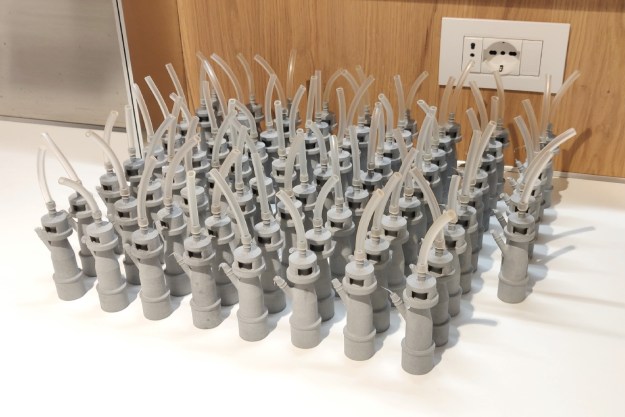
Take one praying mantis and one pair of the world’s smallest 3D glasses and you have not only the coolest looking insect on the planet, but also the framework of a scientific study into how the stick-like invertebrate perceives the world.
According to researchers at the UK’s Newcastle University, the mantis is the only invertebrate capable of understanding 3D vision, providing the team with an opportunity to learn more about how such a way of seeing developed.
Research leader Dr. Jenny Read of the university’s Institute of Neuroscience said the study aims to characterize the mechanisms of 3D vision in mantises. It’s believed its findings could ultimately lead to new methods for implementing 3D recognition and depth perception in computer vision and robots.
“Despite their minute brains, mantises are sophisticated visual hunters which can capture prey with terrifying efficiency,” Read said in a release about the project. “We can learn a lot by studying how they perceive the world.”
Team member Dr. Vivek Nityananda helped to create the mantis’s tiny 3D specs, surely the smallest such glasses in the world.
“This is a really exciting project to be working on,” Nityananda said. “If we find that the way mantises process 3D vision is very different to the way humans do it, then that could open up all kinds of possibilities to create much simpler algorithms for programming 3D vision into robots.”
Part of the research involves showing a mantis a 3D film to see how it responds. Before you start imagining the insect kicking back to enjoy a screening of The Lego Movie, let’s be clear – the film comprises little more than moving targets presented within the visual field of the insect. With the mantis wearing the miniature 3D specs, which are carefully attached using beeswax, the researchers are able to study the insect’s reaction to the images to see if it can be fooled into misjudging depth – you can check out the experiment in the video below.
The research project will also use data from electrophysiological recordings “to help model potential neural algorithms that can be used in technology while simultaneously shedding light on the evolution of 3D vision in the natural world,” the team said in its release.
[Image: BBC]
Editors' Recommendations
- 3DMakerpro’s Seal is a pocket-sized scanner to make next-gen precision 3D prints
- Need a last-minute Halloween costume? Check out these 3D-printable getups
- The future of making stuff: Inside the evolution of 3D printing with Formlabs
- Father’s Day Gift Idea: These cheap 3D printers are on sale for less than $300
- 3D printing lets hospitals make ventilator substitutes with common equipment


